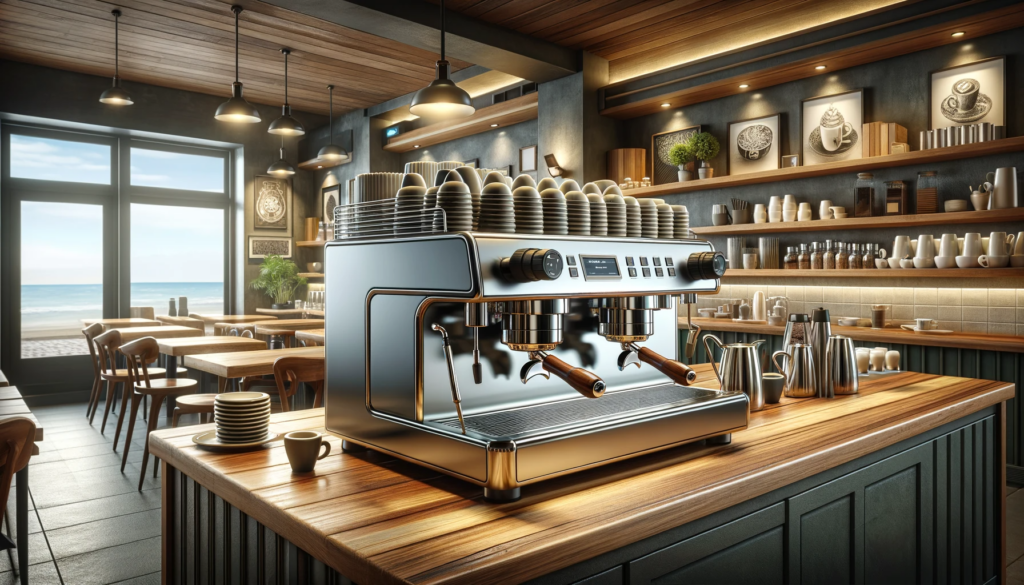
To get started making your own espresso at home, there are a few essential elements to consider: quality coffee beans, the right equipment, and a basic understanding of the brewing process.
By carefully selecting your coffee beans and familiarizing yourself with the various brewing methods, you’re setting the stage for a fantastic cup of espresso.
Understanding Espresso Coffee
Espresso coffee is a small, concentrated coffee beverage made by forcing hot water through finely ground coffee beans under high pressure. In this section, we will explore the components of espresso and the equipment needed to make it.
Components of Espresso Coffee
An espresso shot has a few key components that contribute to its unique taste and texture:
- Coffee grounds: The grind size should be fine to ensure proper extraction of flavor and to create the increased pressure required. Choosing the right coffee beans and roast level can also greatly impact the flavor of your espresso.
- Water: The quality of the water you use is important, as it can affect the taste of your espresso. Ensure the water is at the right temperature, typically around 195-205°F (90-96°C), during the extraction process.
- Pressure: Espresso is brewed under high pressure, with a standard of 9 bars. This pressure is essential for creating a balanced and concentrated shot.
- Extraction: The optimal extraction time for an espresso shot is around 25-30 seconds. This process yields a concentrated beverage with a rich crema, the golden-brown layer that forms at the top of the espresso.
Choosing the Right Equipment
The equipment you choose will have a significant impact on the quality of your espresso. Some essential tools for making espresso at home include:
- Espresso machine: This is the core device for making espresso. There are various types of machines to choose from, including manual, semi-automatic, and fully-automatic devices. Consider your skill level and budget when selecting the right machine for you.
- Coffee grinder: A good quality grinder is essential for achieving a consistent and fine grind. Burr grinders are preferable, as they provide more precise control over grind size compared to blade grinders.
- Portafilter: This is the component of the espresso machine that holds the coffee grounds. It’s important to use a well-fitting, clean portafilter to ensure a proper extraction.
- Tamper: Tamping is the process of compressing the coffee grounds in the portafilter to create even resistance during extraction. A solid, well-balanced tamper is crucial for achieving consistent shots.
- Scale: A scale helps to measure both your coffee grounds and water, ensuring the correct ratios for proper extraction.
Remember to experiment with different beans, grind settings, and extraction times to find the perfect combination to suit your taste.
A Step-By-Step Guide to Making Espresso Coffee
This step-by-step guide will cover the fundamentals of making an amazing espresso to impress yourself, your friends, and your family!
Preparation and Roasting
- Bean Selection and Roasting: Start by choosing high-quality dark roast beans, appropriate for espresso. The origin and blend of the beans affect the flavor of your espresso. You can experiment with different beans to find your preferred taste.
- Grind Size and Grind Consistency: A proper grind is essential for pulling an espresso shot with the right amount of pressure. The coffee should be finely ground, and the consistency should be similar to table salt.
- Dosing and Distribution: Measure your dose of dry coffee grounds, which should be around 18 grams for a double shot. Distribute the grounds evenly in the portafilter basket to ensure a uniform extraction.
- Tamping: Use a tamper to compress the coffee grounds evenly. Tamping ensures that water flows through the coffee with the right amount of pressure, resulting in an ideal espresso shot.
Brewing and Serving
- Brew Time and Water Temperature: Preheat your espresso machine and aim for a brew time of around 30 seconds to pull a double shot. The water temperature should be between 195°F and 205°F.
- Pulling the Espresso Shot: Start brewing your coffee. As you extract your double shot of espresso, you should see a rich, golden-brown crema forming on the surface. This indicates a well-executed shot.
- Texturing Milk for Lattes: If you’re making a latte, steam your milk to create a creamy, velvety texture. Use a steam wand to create the desired consistency, with microfoam that is smooth and glossy.
- Serving and Cleaning: Serve your espresso or latte immediately to enjoy the best taste and aroma. After each use, clean your portafilter basket, rinse the group head, and wipe down your equipment to keep your espresso machine functioning well.
Remember to experiment with different variables like bean origin, grind size, and dose to fine-tune your espresso to your personal preference. Enjoy your journey to practicing this staple coffee brewing approach and becoming a skilled home barista!
We want to remind our readers that the articles or content found on afullmug.com do not constitute nor replace professional health or dietary advice. The information provided on our website is purely educational and informational, and should not be used as a substitute for advice from a licensed dietician, medical practitioner, or nutritionist.


